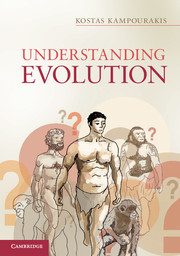Book contents
6 - Evolutionary change
Published online by Cambridge University Press: 05 June 2014
Summary
In the previous chapter I explained how morphological, molecular, and fossil data consistently point to a common ancestry of all organisms on Earth. What is interesting is that organisms which may differ significantly in their morphology (e.g., Drosophila and humans) may share crucial similarities at the molecular developmental level. Although scientists are not yet aware of all the details, they can infer evolutionary relationships among species as these are related genealogically through common ancestry, having evolved from ancestral species through natural processes. Thus, the important question that will be the topic of this chapter is: How is evolutionary change possible? How do new species evolve from common ancestors? What causes this divergence that has produced the enormous diversity of life in our world?
Before turning to the details of these topics, I want to address some wider concerns and obstacles that are pertinent to understanding evolutionary change. It seems it is difficult for people to accept the idea of evolution through natural processes. I think this is due to the fact that it is rather difficult to understand because of two conceptual problems. The first problem is to understand how such different forms can have evolved from more primitive forms, or how organisms can have evolved from ancestors very different from them. This problem was addressed in the previous chapter, and it was explained how evolutionary modification of developmental processes can produce significant morphological changes with small changes at the molecular level (e.g., West-Eberhard, 2005). The second problem is to understand deep time: that evolution has taken place on Earth for an amount of time that is difficult for us to comprehend. It is also difficult to realize that during that time numerous life forms have emerged, but most of them have died out and only a small minority remains. One way to consider time spans is to compare actual time to a 24-hour equivalent. Table 6.1 presents some major events in evolution in actual timing and in a 24-hour equivalent. Table 6.2 presents the geologic time scale, i.e., the various periods in which the history of the Earth is divided.
- Type
- Chapter
- Information
- Understanding Evolution , pp. 169 - 207Publisher: Cambridge University PressPrint publication year: 2014



